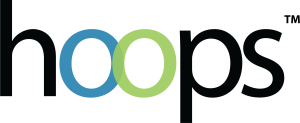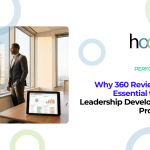In a fast-changing market, a workforce plan based on last year’s structure won’t hold up. Customer demand shifts. Technology changes how work gets done. Budgets move.
Leaders who adapt quickly are using AI workforce planning — the process of combining market data, internal talent insights, and artificial intelligence — to align skills, roles, and strategy in real time.
Done well, this approach shortens vacancy time for revenue-critical roles, reduces turnover, and focuses resources on the skills that make the most difference to the business. Hoops helps leaders do exactly that with Hula Labs (AI-powered market insights), structured quarterly planning, and proven playbooks for critical decisions.
Why Workforce Planning Needs to Change
Classic headcount planning assumes jobs stay static. Reality says otherwise. Generative AI, new tools, and new customer expectations constantly reconfigure what “work” looks like. Treat your organization like a supply chain of skills: you’re matching demand (strategic priorities, growth bets, risk scenarios) with supply (internal skills, external labor markets, and automation). AI workforce planning is the mechanism that keeps that supply chain balanced. SHRM captures this shift toward skills‑driven, AI‑ready planning on the executive agenda.
Four reasons C‑suite leaders care about AI Workforce Planning:
- It connects directly to growth. When you can staff strategic bets with less delay than competitors, your cycle time from idea to revenue shrinks.
- It protects margins. You prevent expensive last‑minute hires and overtime by forecasting gaps early.
- It derisks transformation. Scenario modeling shows the people cost and change load before you commit capital.
- It unlocks your bench. You find internal moves and upskilling pathways that are cheaper and with less time than buy‑only hiring.
A Quarterly Framework for AI Workforce Planning
At Hoops, we help leaders run workforce planning in a quarterly cycle so it becomes part of the operating rhythm. Here’s one of the frameworks we use with executive teams that you can run yourself pairing leadership decisions with the right data and actions.
Phase 1 — See the Field (Weeks 1–2)
- Outside‑in: Use market data to assess talent supply, salaries, and demand for critical skills in your target locations. Use AI workforce planning data to compare cities, salary bands, and skill availability.
- Inside‑out: Inventory your team’s skills, capacity, and readiness for upcoming initiatives.
- Output: A one-page summary for each strategic initiative, showing demand forecasts, risks, and options (build, buy, borrow, automate).
Phase 2 — Prioritize (Weeks 3–4)
- Rank roles by their impact on the business and their vulnerability (for example, if only one person can do the work or the role is hard to fill).
- Decide on the right strategy for each gap: internal moves, external hires, contingent talent, or automation.
- Output: A Role Risk Radar — a simple chart showing which roles are most critical and most at risk.
Phase 3 — Design the Mix (Weeks 5–6)
- Decide the right blend of permanent employees, contractors, automation, and succession moves.
- Use AI workforce planning tools and your internal inputs to compare cost, time-to-fill, and ramp-up time for each option.
- Map career paths and succession for leadership and critical roles so moves don’t create new gaps.
- Output: A funded staffing plan with clear timelines, responsibilities, and success metrics.
Phase 4 — Execute (Weeks 7–11)
- Launch sourcing and internal mobility moves in parallel.
- Prepare for fast ramp-up with training, documented processes, and system access.
- Track key metrics: quality of candidates, time-to-start, and time-to-productivity.
Phase 5 — Review the Film (Weeks 11–12)
Review what worked, adjust for what didn’t, and set new priorities for the next cycle.
Templates You Can Steal Today
Here are some simple, practical exercises that are easy to run with your leadership team using pen, paper, or a whiteboard.
1) Role Risk Radar
A straightforward way to see where your biggest talent risks are.
- Draw a grid with “Business Impact” on one axis (low to high) and “Vulnerability” on the other (low to high).
- Plot each role or function:
-
- High Impact / High Vulnerability: Act immediately. Build a pipeline of external candidates, create a succession plan, cross-train backups, and consider redistributing work to prevent burnout.
- High Impact / Low Vulnerability: Protect what’s working. Focus on retention, engagement, and competitive compensation to keep these roles stable.
- Low Impact / High Vulnerability: Cover the basics without overinvesting. Use contingent or temporary staff, outsourcing, or streamlined processes to keep the work moving without pulling resources from critical roles.
- Low Impact / Low Vulnerability: Monitor periodically. No immediate action is needed beyond routine workforce checks.
Revisit this quarterly. If you have Hoops’ Hula Labs market data, layer it into your AI workforce planning process to factor in hiring difficulty or skill availability.
2) Build–Buy–Borrow–Automate Matrix
After identifying high-risk, high-impact roles from your Role Risk Radar, decide how to close the gap:
- Build: Develop skills internally through training, mentoring, or new projects. Consider cost, time, and the effect on the rest of the team during development.
- Buy: Hire from the market. Factor in location options, competitive pay, and how easy (or hard) the skill is to find.
- Borrow: Use temporary or contract talent from agencies, partners, or consultants. Look at speed to start, knowledge transfer, and fit with your team.
- Automate: Identify tasks that could be handled by technology or AI. Consider whether the tools are mature enough and what change management would be required.
At Hoops, we facilitate this conversation with executives, using Hula Labs data as part of their AI workforce planning process to show market availability, salary benchmarks, and hiring difficulty for each option.
3) 9‑Box for Internal Mobility (Capability × Readiness)
A visual tool to see who might be ready for a critical role and how prepared they are:
-
Draw a 3×3 grid.
-
Horizontal axis = “Capability” (current skill level and performance).
-
Vertical axis = “Readiness” (how soon they could step into the role — now, within a year, or longer).
-
-
Plot each person:
-
High capability / high readiness: Ready for immediate promotion or new role.
-
High capability / medium readiness: Needs targeted development before moving up.
-
Medium capability / high readiness: Good candidates for stretch assignments with support.
-
Review quarterly. Use Hula Labs and internal skill inventories to identify employees with “adjacent skills” — abilities close enough to the target role that they could be developed quickly.
The Data That Makes AI Workforce Planning Work
Effective workforce planning combines two types of information:
Outside-in data (market view):
- Talent availability: How many qualified people are in the market for each skill or role, and where they’re located.
- Current salary ranges: What similar roles are paying in the market.
- Hiring difficulty: How competitive the market is and how long it typically takes to fill these roles.
Inside-out data (internal view):
- Skills inventory: The skills, certifications, and experience already within your team.
- Readiness for key roles: Who could be promoted internally and how soon they’d be ready.
- Attrition risk: Which roles or people are most likely to leave and why.
AI’s role: Using tools like Hula Labs, you can bring these two perspectives together to see a full picture, compare markets, and make informed decisions about where to focus resources. AI can:
- Highlight skills gaps and future shortages
- Compare hiring conditions across multiple locations
- Provide salary benchmarks based on role, location, and industry to ensure competitive offers
Here’s a real-world example: Before opening a new factory, one Hoops client used Hula Labs to compare talent availability, skills gaps, and hiring difficulty in three potential cities. With that data, they chose the market with the strongest talent pool and decided which roles to develop internally, hire locally, or fill with contingent workers.
Common Mistakes to Avoid
- Sticking with annual plans that can’t adapt mid-year. Shift to quarterly workforce planning cycles. Smaller sprints are easier to adjust, so when markets change, your plan can change with them.
- Role-only thinking. Planning by job title instead of by skill can lead to mismatches. Focus on the actual skills needed. This is where AI workforce planning adds value by showing gaps and adjacencies you might miss.
- Buying every skill from the market. Look for internal mobility and upskilling opportunities where adjacent skills already exist. This rewards top talent and makes it easier — and faster — to backfill less critical roles.
- Ignoring contingent talent. 84% of companies use contingent workers for specific needs. Treat this as a strategic tool, not a last resort. Contingent talent can bring expertise at a fractional cost (a model Hoops has helped many clients use successfully!).
- Measuring activity instead of outcomes. Don’t just track hires made. Measure what matters like impact on revenue, reduced vacancy costs, and the stability of your critical roles.
Getting Started in the Next 30 Days
- Week 1: Identify your 3–5 top business initiatives for the next two quarters.
- Week 2: Build your Role Risk Radar for those initiatives.
- Week 3: Run best- and worst-case scenarios for talent needs.
- Week 4: Choose your build/buy/borrow/automate approach, assign owners, and set a budget.
How Hoops Supports AI Workforce Planning
You don’t have to do this alone. Hoops’ fractional coaches work alongside your exec team to guide the process from start to finish.
-
Hula Labs — AI-powered market intelligence on talent supply, skills, salary ranges, and hiring difficulty.
-
Quarterly playbooks — Succession planning, career pathing, workforce planning, and organization design tailored to your priorities.
-
Winning Team System™ — A structured, repeatable process to set workforce priorities, act, and review every quarter.
Whether you manage workforce planning in-house or with a partner, AI workforce planning is now a core leadership capability. Hoops brings the tools, data, and expertise to make it practical, measurable, and tied directly to your business results.
Free Tool: Take our Talent Health Checkup™ to see where your team stands today and what to focus on next.
Build Your Winning Team. Hire and Scale Talent.







